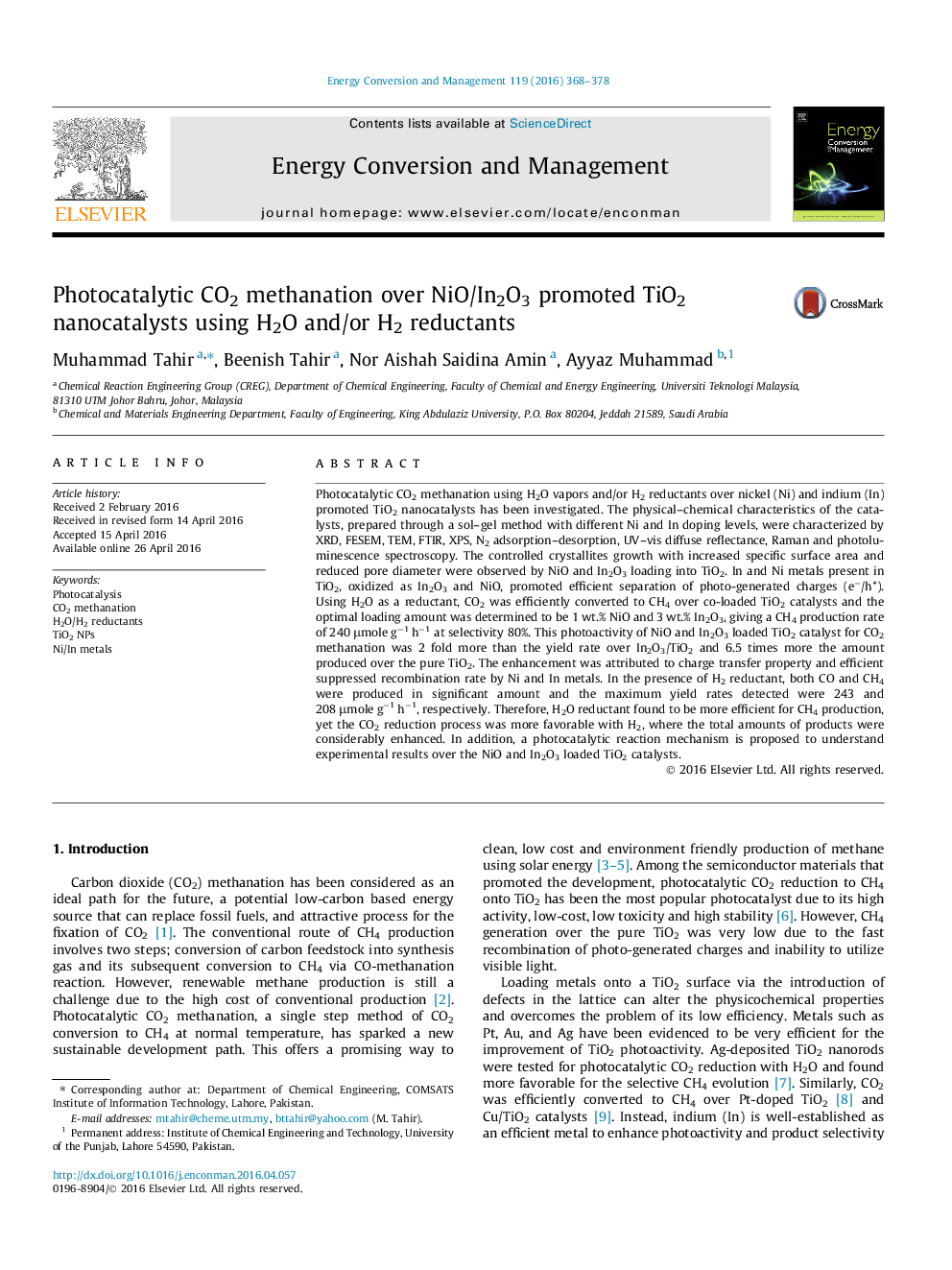| Article ID | Journal | Published Year | Pages | File Type |
|---|---|---|---|---|
| 765195 | Energy Conversion and Management | 2016 | 11 Pages |
•NiO/In2O3 promoted TiO2 nanocatalysts tested for CO2 photoreduction with H2O/H2.•Photocatalytic CO2 methanation depends on reductants type and metal-loading to TiO2.•CH4 production over Ni–In/TiO2 was 2 fold more than In/TiO2 and 6.5 times the TiO2.•The water vapors favoured CO2 methanation and suppressed CO formation.•The H2 reductant gave negative effect on CO2 methanation but enhanced CO yield.
Photocatalytic CO2 methanation using H2O vapors and/or H2 reductants over nickel (Ni) and indium (In) promoted TiO2 nanocatalysts has been investigated. The physical–chemical characteristics of the catalysts, prepared through a sol–gel method with different Ni and In doping levels, were characterized by XRD, FESEM, TEM, FTIR, XPS, N2 adsorption–desorption, UV–vis diffuse reflectance, Raman and photoluminescence spectroscopy. The controlled crystallites growth with increased specific surface area and reduced pore diameter were observed by NiO and In2O3 loading into TiO2. In and Ni metals present in TiO2, oxidized as In2O3 and NiO, promoted efficient separation of photo-generated charges (e−/h+). Using H2O as a reductant, CO2 was efficiently converted to CH4 over co-loaded TiO2 catalysts and the optimal loading amount was determined to be 1 wt.% NiO and 3 wt.% In2O3, giving a CH4 production rate of 240 μmole g−1 h−1 at selectivity 80%. This photoactivity of NiO and In2O3 loaded TiO2 catalyst for CO2 methanation was 2 fold more than the yield rate over In2O3/TiO2 and 6.5 times more the amount produced over the pure TiO2. The enhancement was attributed to charge transfer property and efficient suppressed recombination rate by Ni and In metals. In the presence of H2 reductant, both CO and CH4 were produced in significant amount and the maximum yield rates detected were 243 and 208 μmole g−1 h−1, respectively. Therefore, H2O reductant found to be more efficient for CH4 production, yet the CO2 reduction process was more favorable with H2, where the total amounts of products were considerably enhanced. In addition, a photocatalytic reaction mechanism is proposed to understand experimental results over the NiO and In2O3 loaded TiO2 catalysts.
Graphical abstractFigure optionsDownload full-size imageDownload as PowerPoint slide
